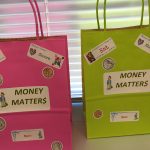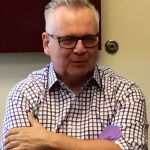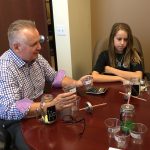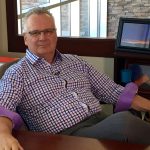Videos
Click on Playlist below to view videos individually.
This module offers students opportunities to learn how to earn, save, spend, and invest money. It examines the history of money, the experiences of how money comes in and goes out, and helps students understand how various financial resources support the planning for, budgeting, and wise use of financial resources.
- Introduction
- Unit 1: What is Money?…Concepts for a Lifetime of Prosperity
- Unit 2: Money Comes In
- Unit 3: Save First!
- Unit 4: Spend Wisely!
- Unit 5: Budget for Today
- Unit 6: Invest for Tomorrow
Photo Gallery
Financial advisor says to teach children about money early
Christopher Latella, 12 News 5:59 p.m. MST August 4, 2015
It is said if you train a child on the way they should go when they are old, they will not depart from it.
This message may hold true to many aspects of raising children, but as any financial adviser will tell you, this rings particularly true when it comes to financial literacy.
“I think one of the big things we are seeing more and more of in our practice is parents actually talking about money with their kids,” Ken Edwin, a financial adviser with Ameriprise Financial, said.
Edwins says the sooner a parent can teach their child about money, the better.
“Financial literacy is important for kids at this age,” Edwins said. “There is a direct correlation between financial literacy and financial success later in life. The more they learn, [and] the earlier they learn the better off they are later, in terms of making financial decisions.”
To teach children about money, Edwins turns to a currency almost any kid can relate to: jellybeans.
In a glass jar, sitting in the middle of a large conference table in the Ameriprise Financial offices, rests 1,000 jellybeans. A group of about a half-dozen children sit around the jar with 100 jellybeans of their own.
Edwins places three cups in front of each child. The cups are labeled “Share,” “Save” and “Spend.”
To teach the kids about the three basic pillars of financial literacy: Saving, giving and spending, Edwins asks the children to allocate jelly beans to each cup as they see fit.
The room becomes alive with the sound of jellybeans plopping into plastic cups and the excited chatter of the children.
“What we are trying to impart to the kids is how long it will take them to save that much or get that much, a thousand jellybeans,” Edwins said. “If they are going to save and of course, no body saves all their money.”
Once the jellybeans are allocated, each child shares how many they are saving, spending or giving.
“If you saved 50 jellybeans a week, to get a 1,000, you would need,” Edwins turned to his calculator.
“Then it would take…” one of the students starts the math in his head.
“20 weeks,” Edwins said.
For one of Edwins’ students, this lesson hits home.
“But I am saving up for something in real life that is $110,” a student named Van told the group.
“My birthday was a few days ago so, I just started saving,” Van said. “But for my birthday I’m at $45.”
“So you have a ways to go,” Edwins said. “So when do you hope to be done saving so you can do what you want?”
“Probably in the next month or so, probably.”
Along with the three pillars of financial literacy, the group starts looking at the long term investments of their jellybeans. As soon as the lesson is over, a rainbow of colors flash across the room as the children start trading their jellybeans back and forth like stockbrokers on the trading floor.
The lessons these children learn are one part of the Hip Hop Healthy Heart Program for Children. The program teaches the importance of both physical and mental training to provide children with a balanced life.
The program is available to teachers for school use or for parents at home.
“I think the Hip Hop program is wonderful for schools to engage with their families in a really significant way,” Edwins said. “A different way than traditionally they have done.”
While other aspects of the Healthy Heart program focuses on physical education and nutrition, a module called “Money Matters” shows kids how to manage their money properly.
“So we know, for example, that the more people focus on exercise,” Edwins said. “The better they eat, the more positive self-image that people have, the better the decisions are about how they use their money.”
And for a financial advisor, anything that gets people to make smart decisions with their money is a good thing.
Ken Edwins
Ken Edwins is owner of Ken Edwins & Associates a Financial Advisory Practice of Ameriprise Inc. Ken has been in a financial planner for 23 years and has a rich background in the fields of behavioral finance and neuro finance. Each of these fields focus on the factors influencing why and how people make financial decisions. Ken combines these professional interests with his personal focus on fitness and exercise. He is an avid cyclist and hiker. Hi firm is located in north Phoenix-Desert Ridge area where he has been for the last 20 years focusing the practice on issues of sustainable investing, sustainable health, and how to make good financial decisions.
www.ameripriseadvisors.com/ken.edwins
When we exercise and or meditate it helps the executive function of our brain function more effectively because each activity causes our body to release hormones that can help us make better financial decisions.
The self affirmation, healthy eating habits, exercise all the healthy habits you learn about helps your brain and body work better together and help you make better decisions about your life and the money you earn.









